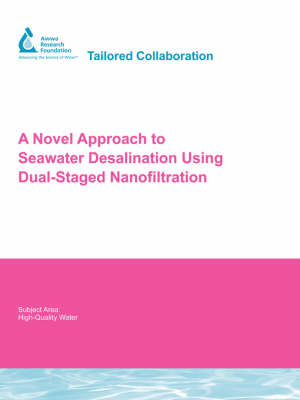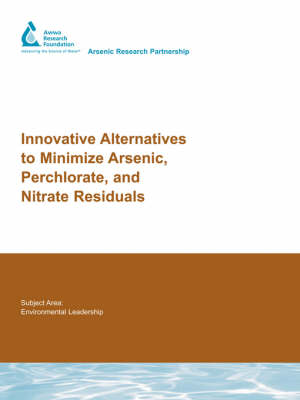Water Research Foundation Report
4 total works
Installation, Condition Assessment, and Reliability of Service Lines
by Yann A Le Gouellec
Published 1 July 2007
Just like residuals management can be overlooked when considering various treatment processes, service lines are often forgotten in water infrastructure management. If ignored for too long, neglected service lines can severely affect the quality and integrity of a utility's distribution system. This report focuses on residential service lines of 2 inches in diameter and smaller. The lack of information on service lines prevents water utilities from developing proactive policies regarding such issues as material type and life expectancy of service line products, adequate installation methods, and party responsibility. It is vital for utilities to understand the environmental conditions affecting the performance and reliability of service lines.
This report responds to this lack of information by offering a best practices manual based on a literature review, case studies, a workshop, and data collected on specific areas of interest to utilities. The project team also prepared an AWWA-sponsored web cast in August 2005 to disseminate the collected information. Finally, an information tree helping users find appropriate installation techniques, solutions to service line leaks, or condition assessment methods was developed.
This report responds to this lack of information by offering a best practices manual based on a literature review, case studies, a workshop, and data collected on specific areas of interest to utilities. The project team also prepared an AWWA-sponsored web cast in August 2005 to disseminate the collected information. Finally, an information tree helping users find appropriate installation techniques, solutions to service line leaks, or condition assessment methods was developed.
A Novel Approach to Seawater Desalination Using Dual-Staged Nanofiltration
by Yann A Le Gouellec
Published 1 March 2007
As the quantity and quality of inland water sources decline, more coastal municipalities are looking at seawater desalination as a potential source of drinking water. The Long Beach Water Department (LBWD) developed an alternative technology to desalt seawater by using dual-staged nanofiltration (NF2). This novel NF system treats the first-stage permeate through a second stage in order to produce finished water with salinity levels that meet drinking water standards.
Three commercially-available NF membranes were selected for this study based upon their designation as NF membranes by the manufacturers and their salt rejection characteristics. Results from the bench-scale evaluation were integrated in a performance-predicting model, which was subsequently calibrated against the results obtained with an 8-gpm pilot unit. The pilot-test plan considered the impact of temperature, pressure, and array configuration on permeate water quantity and quality. The percentage of desalinated water that could be blended into LBWD's distribution system was determined by taking into account the issues of disinfection by-product (DBP) formation, disinfectant residual, and corrosivity. Finally, viral challenge tests were considered to verify the inherent redundancy of the system and the impact that recycling streams would have on virus accumulation.
Three commercially-available NF membranes were selected for this study based upon their designation as NF membranes by the manufacturers and their salt rejection characteristics. Results from the bench-scale evaluation were integrated in a performance-predicting model, which was subsequently calibrated against the results obtained with an 8-gpm pilot unit. The pilot-test plan considered the impact of temperature, pressure, and array configuration on permeate water quantity and quality. The percentage of desalinated water that could be blended into LBWD's distribution system was determined by taking into account the issues of disinfection by-product (DBP) formation, disinfectant residual, and corrosivity. Finally, viral challenge tests were considered to verify the inherent redundancy of the system and the impact that recycling streams would have on virus accumulation.
Innovative Alternatives to Minimize Arsenic, Perchlorate, and Nitrate Residuals
by J. Min, L. Boulos, J. Brown, D. Cornwell, Yann A Le Gouellec, E. Coppola, J. Baxley, J. Rine, J. Hering, and N. Vural
Published 1 March 2006
Potentially high levels of arsenic, nitrate, and perchlorate are found in water sources throughout the United States. Most treatment technologies for removing these contaminants produce concentrated waste that requires special handling and disposal. Disposal options for these wastes are often limited by local regulations and other site-specific restrictions. Presently, the disposal issue is limiting certain treatment technologies for arsenic, perchlorate, or nitrate. Therefore, innovative alternatives for managing residuals discharge and disposal are needed. The objectives of this project were to develop and validate innovative processes to minimize the production of residuals from treatment processes used to remove arsenic, perchlorate, or nitrate from drinking water.
Geochemical Controls on Chromium Occurrence, Speciation, and Treatability
by J. Hering and T. Harmon
Published 31 July 2005
Although the occurrence of Cr(VI) in groundwater is often attributed to industrial contamination, it can also derive from natural sources, specifically the weathering of Cr-containing aquifer minerals. The release of Cr from geologic materials can lead to accumulation of Cr in infiltrating water under conditions of either natural or artificial recharge. The potential accumulation of hazardous solutes, such as Cr(VI), during groundwater recharge and storage may, in part, determine the feasibility of ASR projects. The goal of this project was to improve the science base for the management of groundwater resources subject to naturally-elevated concentrations of Cr(VI). Specific objectives included (1) assessing the influence of oxidizing conditions on the release of Cr(VI) from Cr(III)-containing minerals in laboratory experiments, (2) conducting numerical simulations to predict the potential for Cr accumulation in recovered water in aquifer storage and recover (ASR) projects, and (3) investigating redox-assisted coagulation with Fe(II) as a technology for Cr(VI) removal in laboratory experiments.



